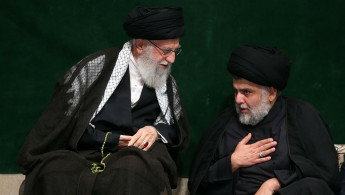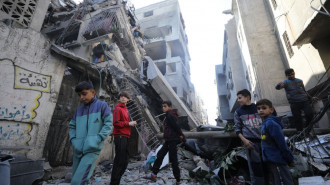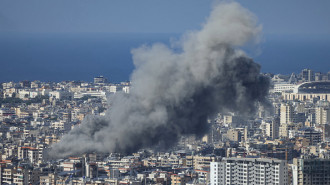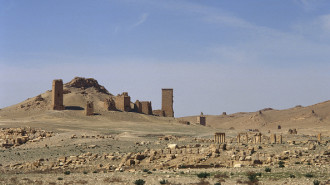Iraq’s Muqtada al-Sadr visits Iran despite protest upheaval at home
According to Iranian journalists, Sadr was travelling to Qom, Iran’s holy Shia city, via the capital Tehran, 100 kilometres away.
Iranian interference in Iraqi politics has been a source of protesters’ anger during the fierce demonstrations that swept the country over a month ago and show little sign of abating.
Meanwhile, Iran’s leadership blame the mass demonstrations on “foreign interference”, in an attempt to smear the protests as a US, Saudi and Israeli plot rather than a genuine sign of popular discontent and demands for radical political overhaul.
Read more: 'Our youth are being shot at': Iraq's protests in pictures
Although Sadr visits Qom frequently for family and religious reasons, his most recent trip has surprised observers due to its timing in the middle of the protests which threaten to bring down the government.
Sadr himself is one of the current government's two main sponsors after his Saeroon bloc won the largest share of parliament's 329 seats in a vote last year. It gained popular support due to Sadr's Iraqi nationalist, anti-corruption and anti-sectarian platform, condemning both US and Iranian meddling in the country’s politics.
Twitter Post
|
However the firebrand cleric and ex-militia leader has spearheaded demands for Prime Minister Adel Abdel Mahdi’s resignation and early elections, as he drove his car amid thousands of demonstrators in the holy city of Najaf on Tuesday.
He also tweeted in support of the initial six-day wave of protests that rocked the country at the start of October and resumed two weeks later.
At least 255 people have died and 11,000 been wounded since demonstrations broke out on 1 October over unemployment and corruption, before evolving into calls for the government to quit.
Iran emerged as a major power broker in Iraq after the overthrow of Saddam Hussein and has close ties to powerful political parties and state-backed militias that were mobilised to battle the Islamic State group but have now become an imposing political faction.
Videos circulated online of a group of protesters on Friday holding a poster showing Iran's Supreme Leader Ayatollah Ali Khamenei and the head of its elite Quds force, Gen. Qassim Soleimani, with their faces crossed out.
Follow us on Twitter and Instagram to stay connected




 Follow the Middle East's top stories in English at The New Arab on Google News
Follow the Middle East's top stories in English at The New Arab on Google News


